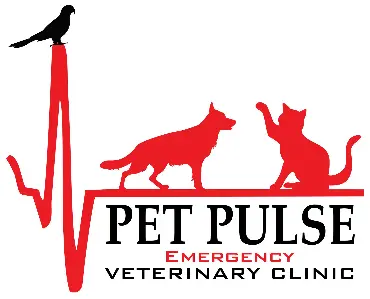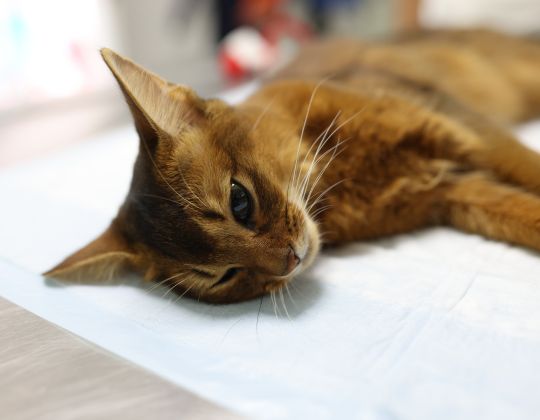Vomiting may be messy but it is a message to decode and understand.
Is your cat throwing up more than usual, and you’re not sure if it’s just a hairball or something serious? Cats vomit for many reasons, and while an occasional mess might be normal, frequent vomiting could be a sign of something deeper. That’s why it’s important to understand what’s behind cat vomiting.
Cat vomiting is a common issue caused by hairballs, eating too quickly, food sensitivity, or illness. Occasional vomiting may be normal, but frequent or sudden vomiting, especially if your cat isn’t eating or seems weak, may signal a health problem that needs a vet’s attention.
Let us break down what cat vomiting looks like, why it happens, and how to tell if it’s serious or something you can manage at home.
Why Do Cats Vomit?
Cats vomit for many reasons. Some are harmless, but others can be signs of a deeper issue. Here’s a breakdown of the most common causes of cat vomiting and what they might mean for your cat.
Hairballs
Cats groom themselves constantly and swallow loose fur. This hair can build up in their stomach and eventually come out as a hairball. It’s completely normal, and you might notice your cat vomiting white foam or bile right before the hairball comes up.
Eating Too Fast
Some cats eat like they’re in a race. If your cat gulps down food too quickly, they might throw it up right after. This is often just regurgitation, not true vomiting, and may not be serious.
Empty Stomach
When a cat hasn’t eaten in a while, stomach acid can build up and irritate the lining. This can lead to your cat vomiting clear liquid or white foam, especially in the early morning.
Food Sensitivities or Sudden Diet Changes
Cats can develop sensitivities to certain ingredients in their food. A sudden switch in diet can also upset their stomach and lead to vomiting. Transitioning slowly between foods can help.
Parasites
Intestinal worms, especially in kittens, can irritate the digestive system and cause vomiting. If your kitten is throwing up and looks unwell, parasites may be the cause.
Toxins
If your cat eats something toxic like certain houseplants, spoiled food, or human medication, vomiting may be the first sign. This is an emergency, and you should call your vet right away.
Infections
Bacterial and viral infections can upset your cat’s stomach and cause vomiting, often along with symptoms like fever, diarrhea, or loss of appetite.
Chronic Illness
Older cats or those with long-term conditions may vomit more frequently. This includes cats with kidney disease, liver problems, diabetes, hyperthyroidism, inflammatory bowel disease, or even cancer. These conditions often cause vomiting off and on over time.
Foreign Objects
Cats are curious, and sometimes they swallow things they shouldn’t, like string, rubber bands, or small toys. These objects can block the intestines and cause repeated vomiting. It’s serious and usually needs surgery.
Constipation
If your cat is struggling to poop, they might vomit due to the buildup and pressure in their digestive system. You may also notice straining in the litter box.
Medication Side Effects
Some medications can upset your cat’s stomach. If your cat starts vomiting after starting a new medicine, talk to your vet. They may need an alternative or a change in dosage.
Inner Ear Issues
Problems with the inner ear can affect your cat’s balance and make them feel nauseous, similar to motion sickness. In rare cases, this can lead to vomiting.
Heartworm Disease
Although it’s rare in cats, heartworm can sometimes cause coughing, vomiting, and even collapse. It’s more common in areas with mosquitoes and can be prevented with regular medication.
Urinary Tract Infections (UTIs)
While vomiting isn’t the most common sign of a UTI, severe or advanced infections can affect other body systems and lead to nausea or vomiting in some cases.
Types of Cat Vomit
Not all vomit looks the same, and what your cat brings up can actually give you clues about their health. Some types may be harmless, while others might mean something more serious is going on.
Here’s a guide to what different kinds of cat vomit might mean.
White Foam
This often shows up when a cat’s stomach is empty or slightly irritated. It’s usually not urgent, but if it happens often, it’s worth talking to your vet.
Yellow Liquid
Yellow vomit usually contains bile, a fluid made in the liver. It may appear when your cat hasn’t eaten in a while or if their stomach is reacting to something.
This can be water or stomach juices. While it might not be alarming if it happens once, repeated episodes can point to nausea, overhydration, or other health concerns.
Undigested Food
When food comes back up soon after eating, your cat might be eating too fast or may have a sensitive stomach. It can also happen if something is blocking their digestive tract.
Hairballs
Cats often swallow fur while grooming, and sometimes it all comes back up in a wet clump. Hairballs can be normal, but frequent ones might need attention.
Reddish or Brownish Vomit
If the vomit looks like it has blood or resembles coffee grounds, it could mean there’s bleeding somewhere inside. This is a red flag so call your vet as soon as possible.
Black Vomit
Black or tar-like vomit may suggest old, digested blood. This could be from ulcers or internal irritation and should be taken seriously.
Greenish Vomit
Green vomit can mean food or bile has traveled up from the intestines. It’s not common and can be linked to deeper digestive issues.
Mucus or Slime
If the vomit is mostly mucus, it might not be true vomiting but regurgitation. This usually comes up without warning and without effort.
Visible Worms
If you see long, thin worms in the vomit, your cat likely has an intestinal parasite. This should be treated right away by a vet.
When Vomiting Comes with Other Symptoms
An occasional hairball or upset stomach isn’t always a big deal, but if vomiting comes with other changes, it could mean your cat needs help. Keep an eye out for these signs:
- Loss of appetite or eating far less than usual
- Low energy or a sudden drop in activity
- Noticeable weight loss over time
- Diarrhea or unusually loose stools
- Hiding more than normal or acting withdrawn
- Drooling or frequent lip-licking
- Dry gums or eyes that look a little sunken
- Vomiting more than once in a single day
- Sneezing, coughing, or labored breathing along with vomiting
- Drinking much more or much less water than usual
- Straining in the litter box or going outside it altogether
If your cat is throwing up and you notice any of these symptoms, don’t wait. A quick call to your vet can make all the difference.
Vomiting vs. Regurgitation in Cats
Cats can bring things up for different reasons, and while it may look the same at first, vomiting and regurgitation are two separate things. Telling them apart can help you understand what your cat needs.
When a cat vomits, it works hard to do so. You might see them crouch, drool, or make gagging sounds before they throw up. What comes out usually looks digested. It might contain yellow fluid, hair, food pieces, or even foam. Vomiting usually starts in the stomach or intestines and often means your cat isn’t feeling well.
Regurgitation looks different. It happens fast, without warning, and without effort. Your cat might simply open its mouth and release undigested food. This often happens right after eating, especially if they ate too quickly or didn’t chew properly. There’s no retching, no signs beforehand, it just happens.
One way to tell the difference is to look at what came out. If it looks chewed but unchanged, it was likely regurgitated. If it looks broken down, wet, or smells sour, it’s probably vomit.
Acute vs. Chronic Vomiting in Cats
Acute vomiting starts suddenly and is usually caused by something like eating the wrong food, parasites, or an infection. It often goes away quickly once treated.
Chronic vomiting happens off and on for weeks or months. It’s often linked to long-term issues like kidney disease, IBD, or hyperthyroidism. Cats may seem fine between episodes, but the vomiting keeps coming back.
Knowing the difference helps you spot a quick fix versus signs of something more serious.
How to Diagnose Cat Vomiting
If vomiting doesn’t stop or happens often, your vet will try to find out what’s wrong. Here’s how:
1. Ask About Symptoms
The vet will ask:
How often does your cat vomit?
What does the vomit look like?
Is your cat still eating?
Are there other signs, like weight loss or diarrhea?
2. Physical Exam
Your cat will be checked for pain, dehydration, or signs of illness.
3. Blood and Urine Tests
These can reveal kidney issues, liver problems, infections, or other hidden health issues.
4. Imaging (X-rays or Ultrasound)
If the vet thinks there might be a blockage or organ issue, diagnostic imaging will help spot it.
5. Stool Test
A stool test checks for parasites or harmful bacteria.
6. Food Trial
If allergies are suspected, your cat may be put on a special diet for a few weeks.
7. Endoscopy or Biopsy
In tough cases, a camera or tissue sample may be needed to look inside your cat’s digestive system.
Treatments for Cat Vomiting
Once the cause of vomiting is identified, treatment is based on your cat’s specific needs. Here are the main options.
1. Food Changes
If diet is the problem, your vet might suggest switching to a bland, easy-to-digest food. Smaller meals given more often can also help. For cats with food allergies or sensitivities, a prescription or hypoallergenic diet may be needed.
2. Fluids
Vomiting can cause dehydration. In those cases, your cat may need fluids given under the skin or through an IV to stay hydrated.
3. Medications
Antiemetics are used to stop nausea and vomiting. If the stomach is irritated, antacids may be given. Infections are treated with antibiotics, and steroids are used to reduce inflammation. Probiotics can support healthy digestion and restore balance in the gut.
4. Deworming or Antibiotics
If the vet finds parasites or harmful bacteria, the cat will need the right medication to clear the infection.
5. Treatment for Chronic Conditions
If vomiting is due to kidney disease, hyperthyroidism, or other long-term issues, your cat will need regular treatment. This can include daily medication, special diets, and follow-up visits to the clinic.
6. Surgery or Endoscopy
If a cat has swallowed something like a string or small object, and it is causing a blockage, surgery or a scope procedure may be needed to remove it.
7. Rest and Monitoring
Mild cases can often be managed at home. Rest, a bland diet, and keeping a close eye on your cat may be enough if there are no other serious symptoms.
When to Worry About Vomiting in Cats
Call your vet if:
- Your cat vomits two or three times in a row.
- Vomiting comes with diarrhea or no interest in food.
- Your cat hasn’t eaten or drunk anything in 12 hours and keeps vomiting.
- Your cat already has diabetes, kidney disease, or hyperthyroidism.
- You see a worm in the vomit.
- Clean the litter box often and keep the area tidy to avoid reinfection if parasites are involved.
FAQs
What if my kitten threw up more than once?
If your kitten threw up more than once, it could be due to parasites, infection, or a diet issue. Contact a vet immediately to rule out serious causes.
Is it normal for a cat to vomit every day?
No, daily vomiting is not normal. Frequent vomiting may signal a health problem and should be checked by a veterinarian.
Why is my cat throwing up and not eating?
If your cat is vomiting and refusing food, it could be a sign of a serious issue like gastrointestinal blockage, infection, poisoning, pancreatitis, or kidney disease.
Conclusion
Cat vomiting isn’t always serious, but it’s not something to brush off. A hairball might be harmless, but frequent vomiting or odd colors like white foam or yellow liquid could signal a bigger problem.
If your cat stops eating, vomits more than once, or seems unwell, call your vet. Acting early can help your cat recover faster and stay healthy.



